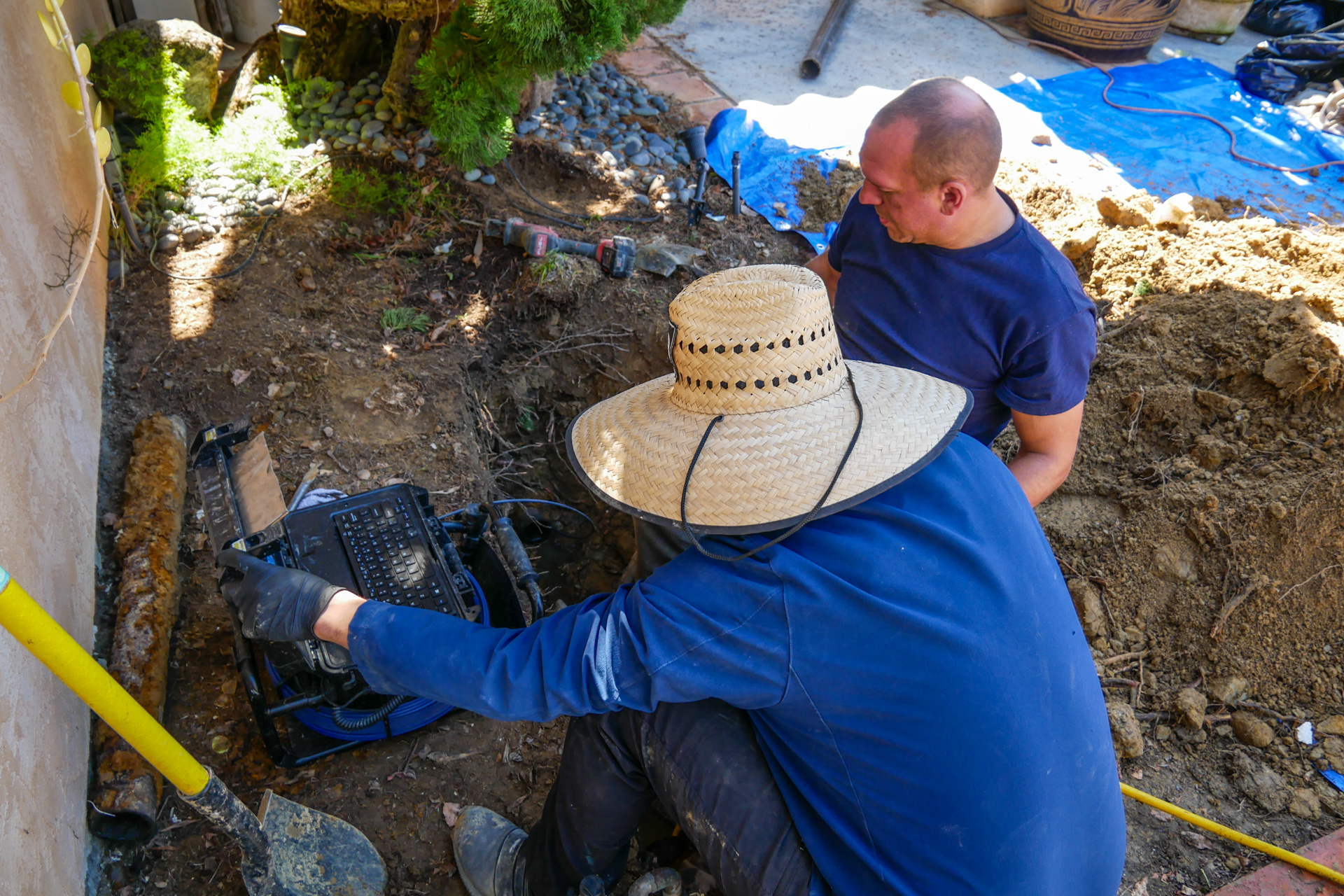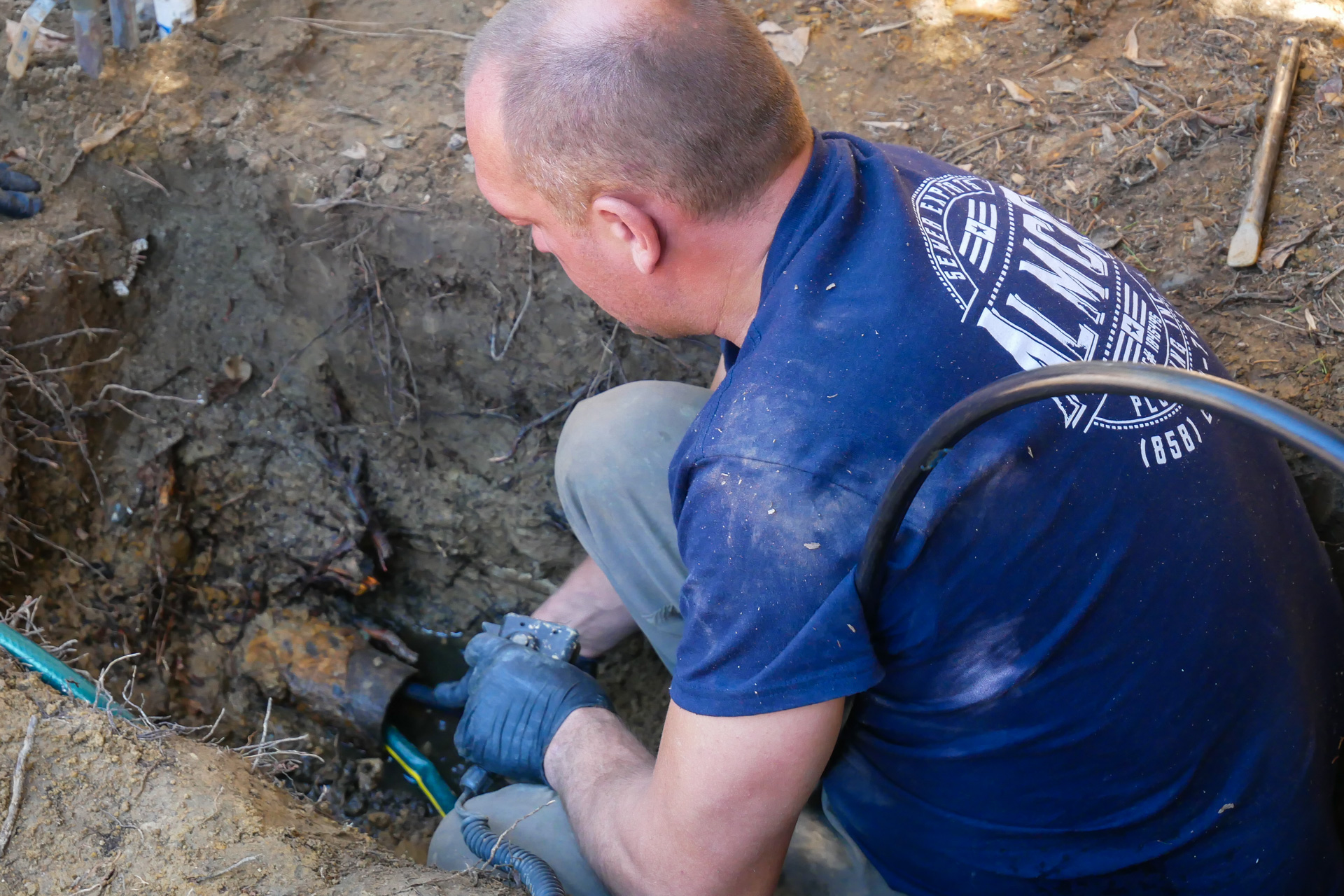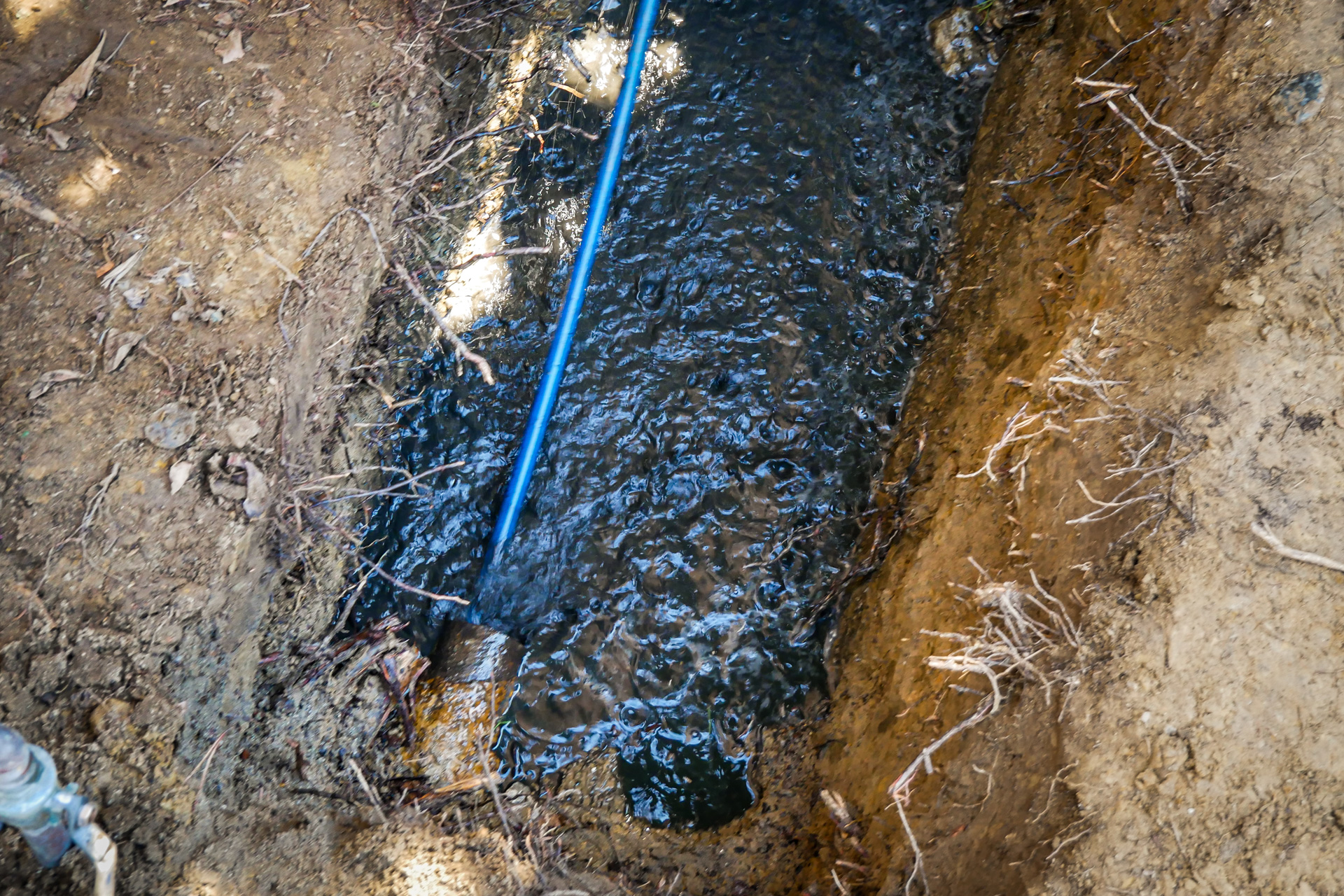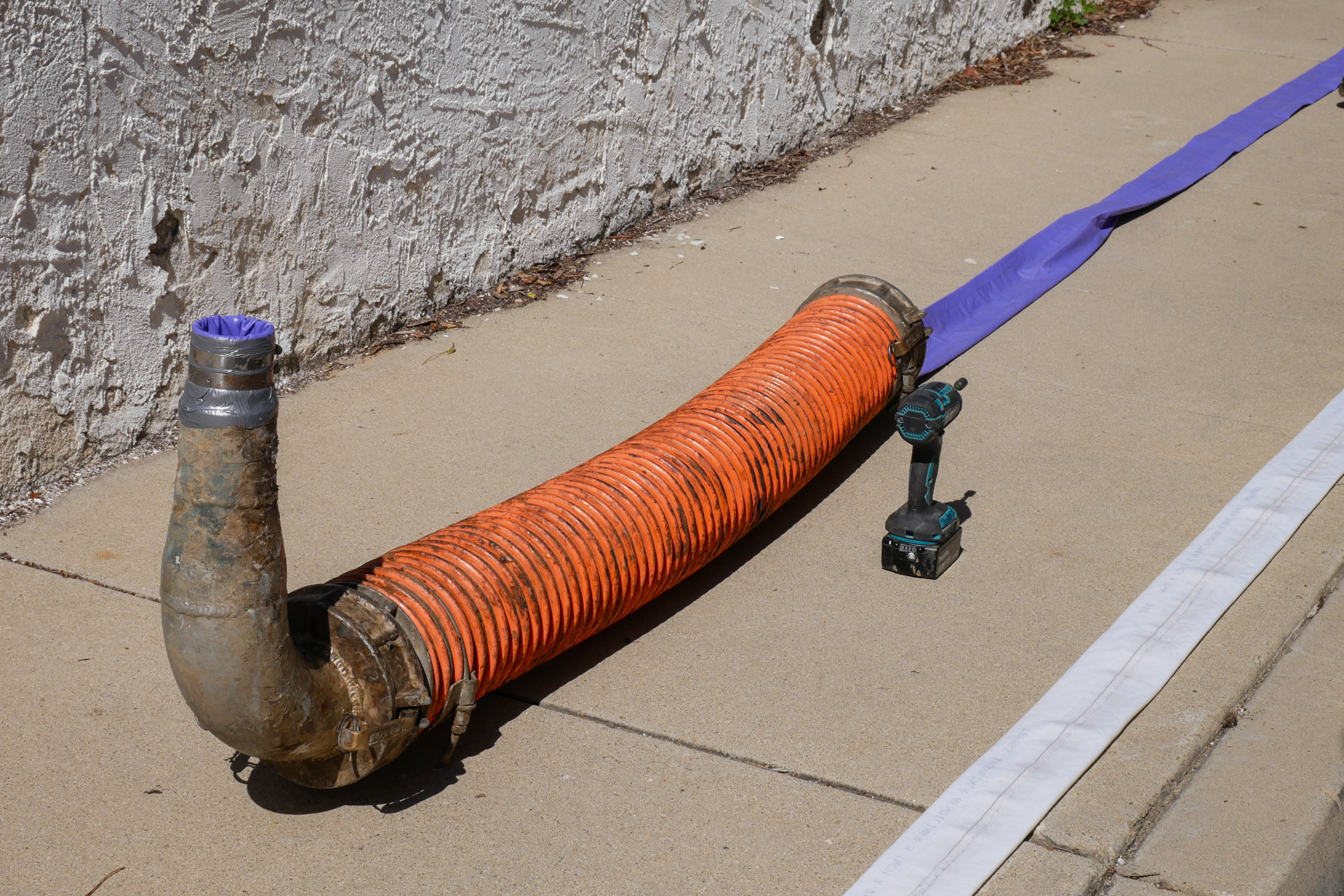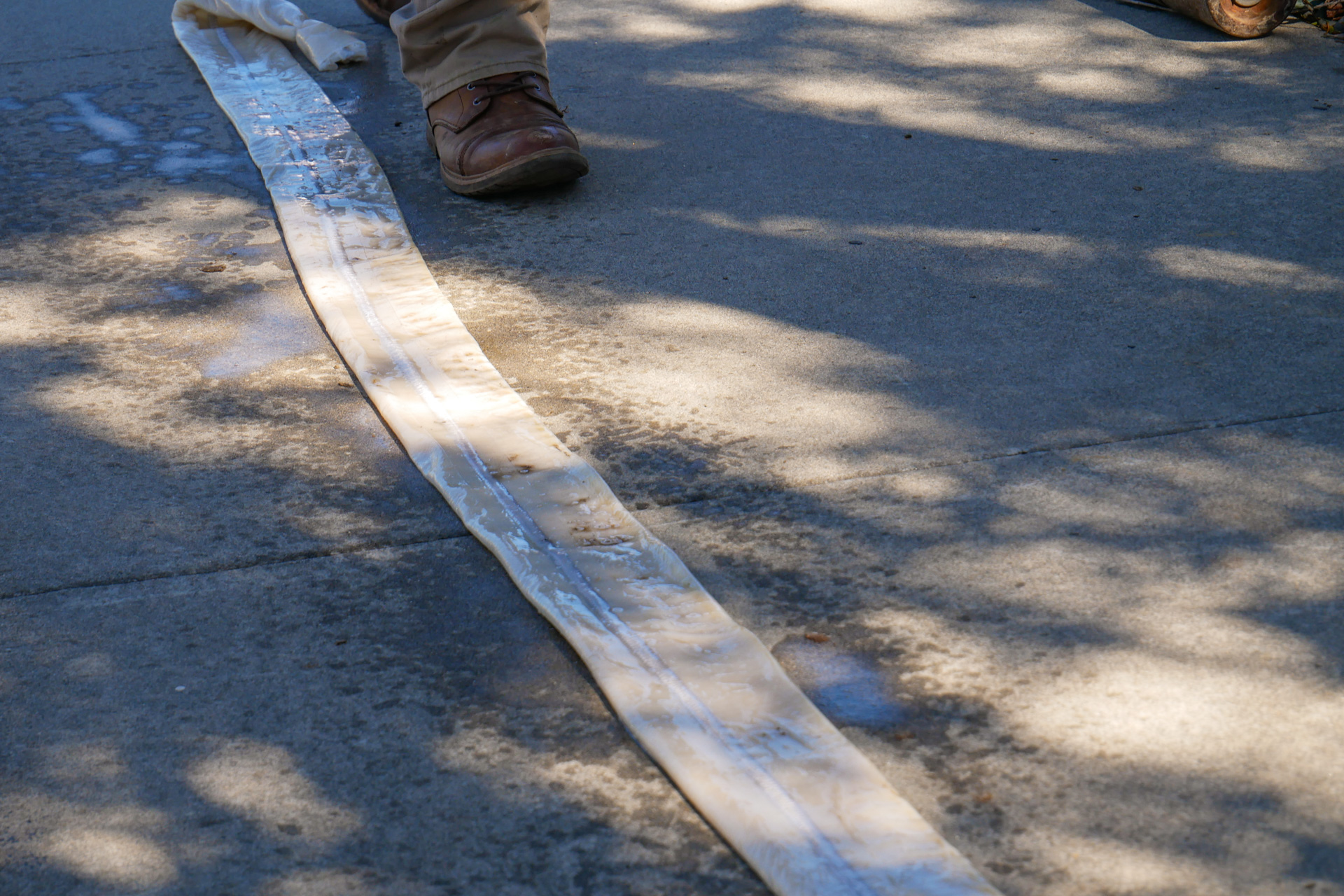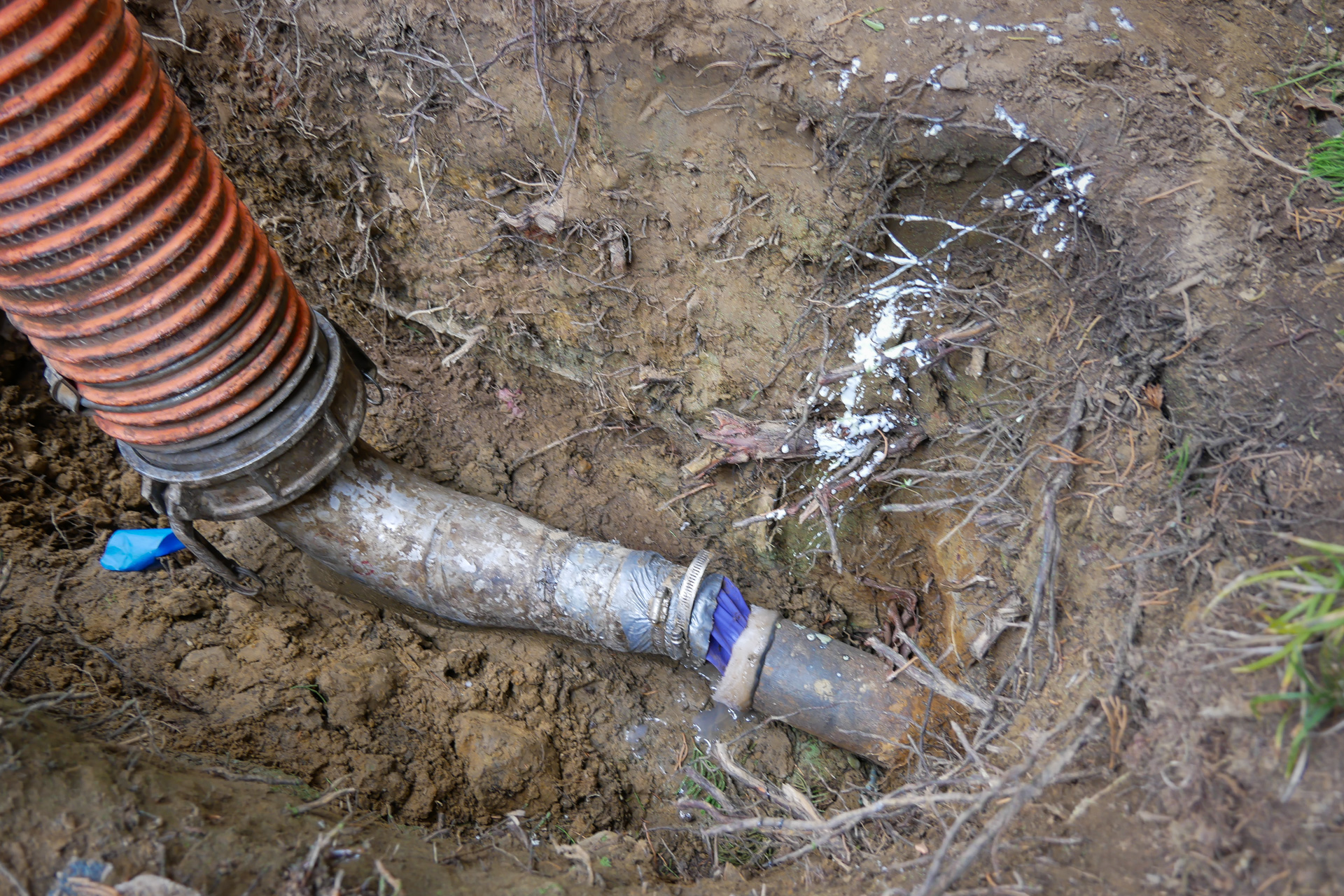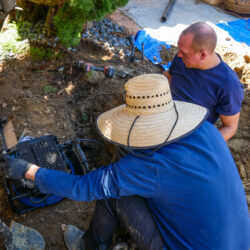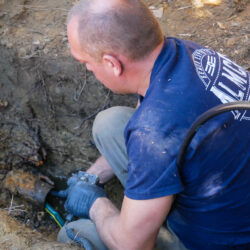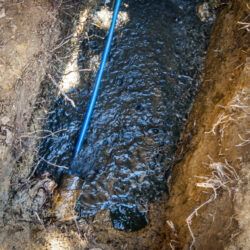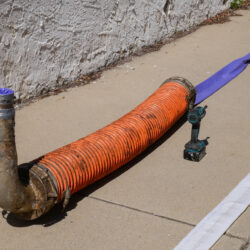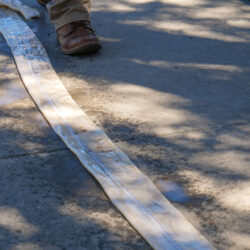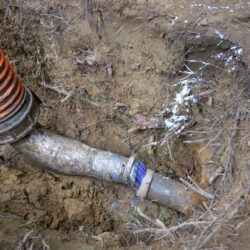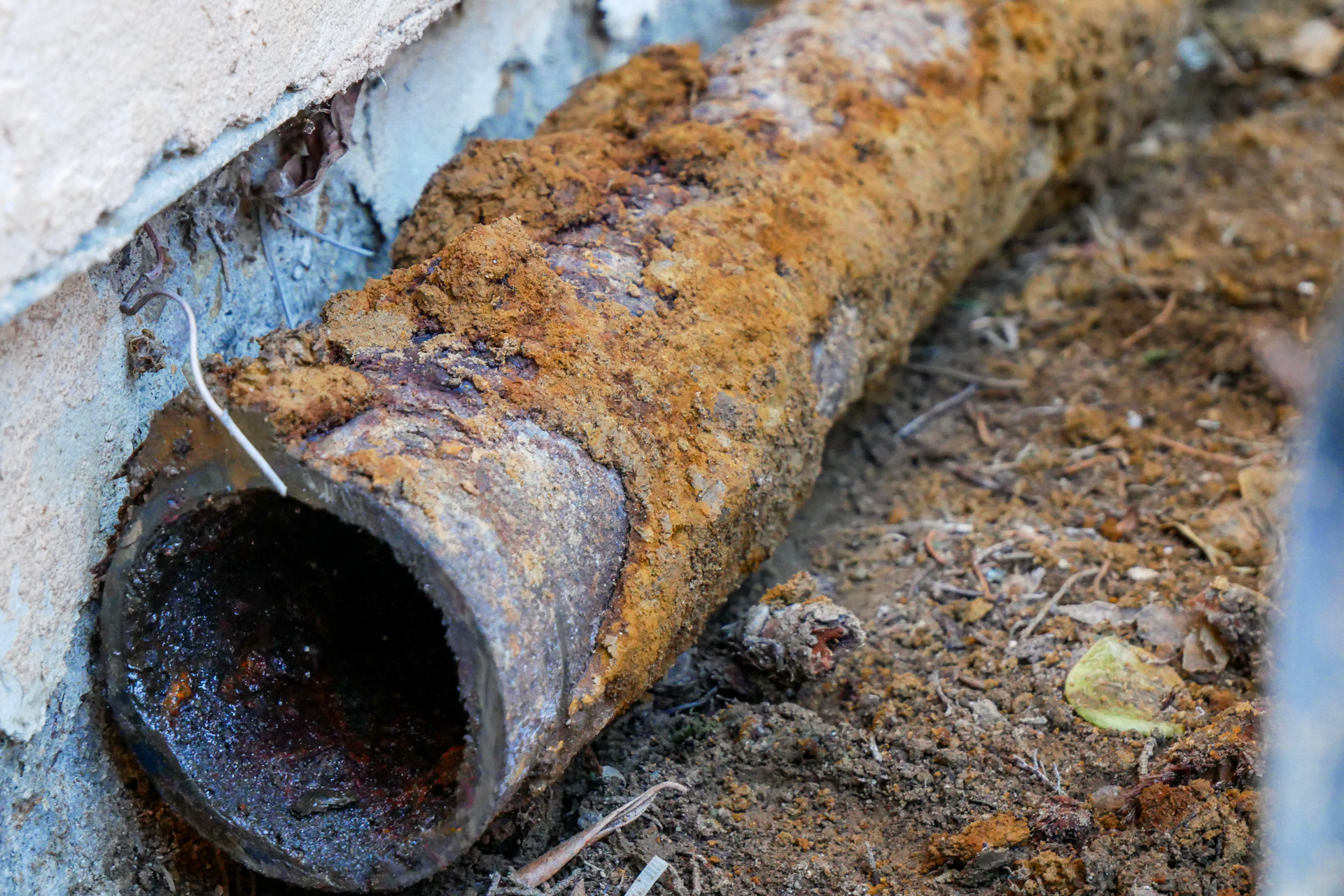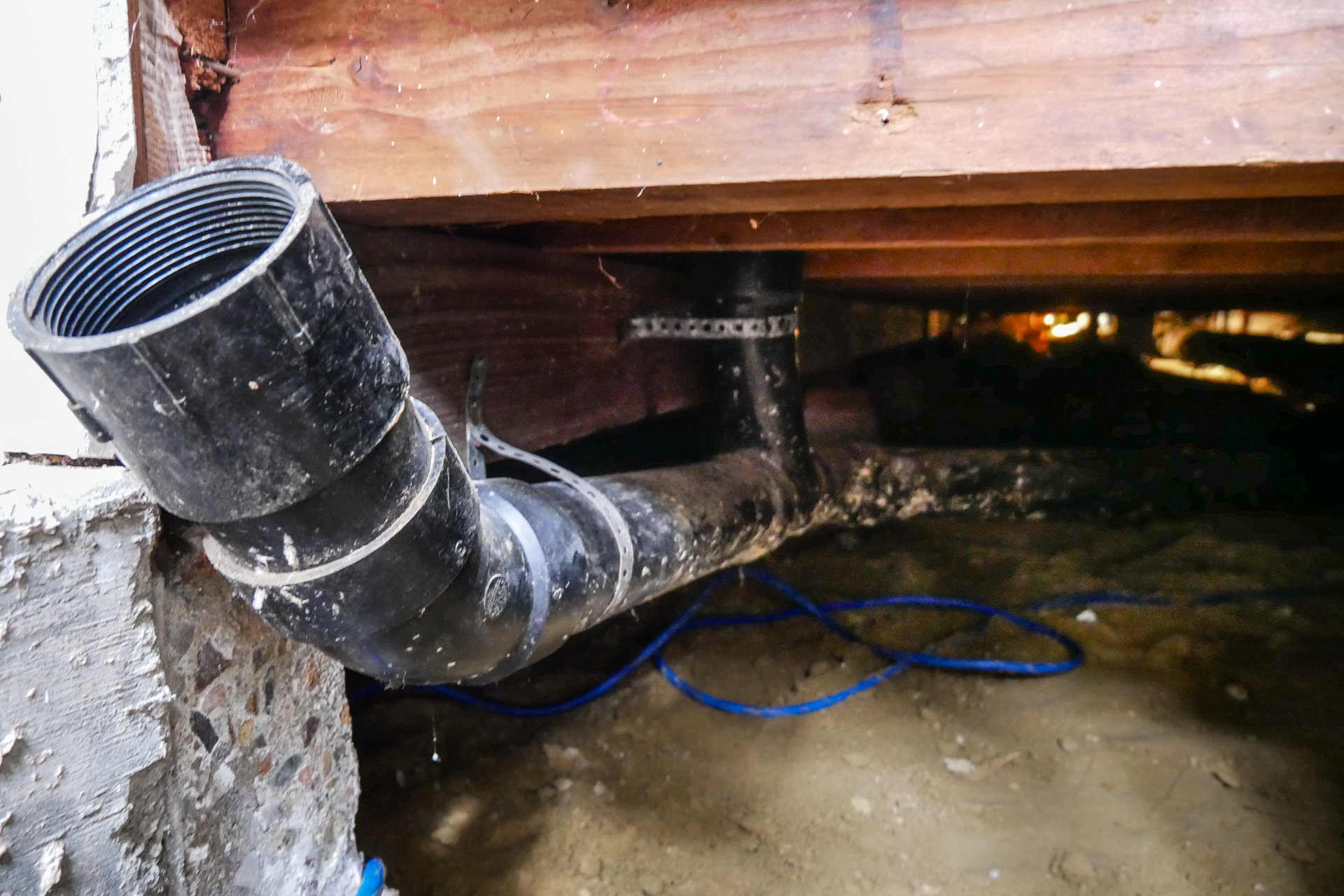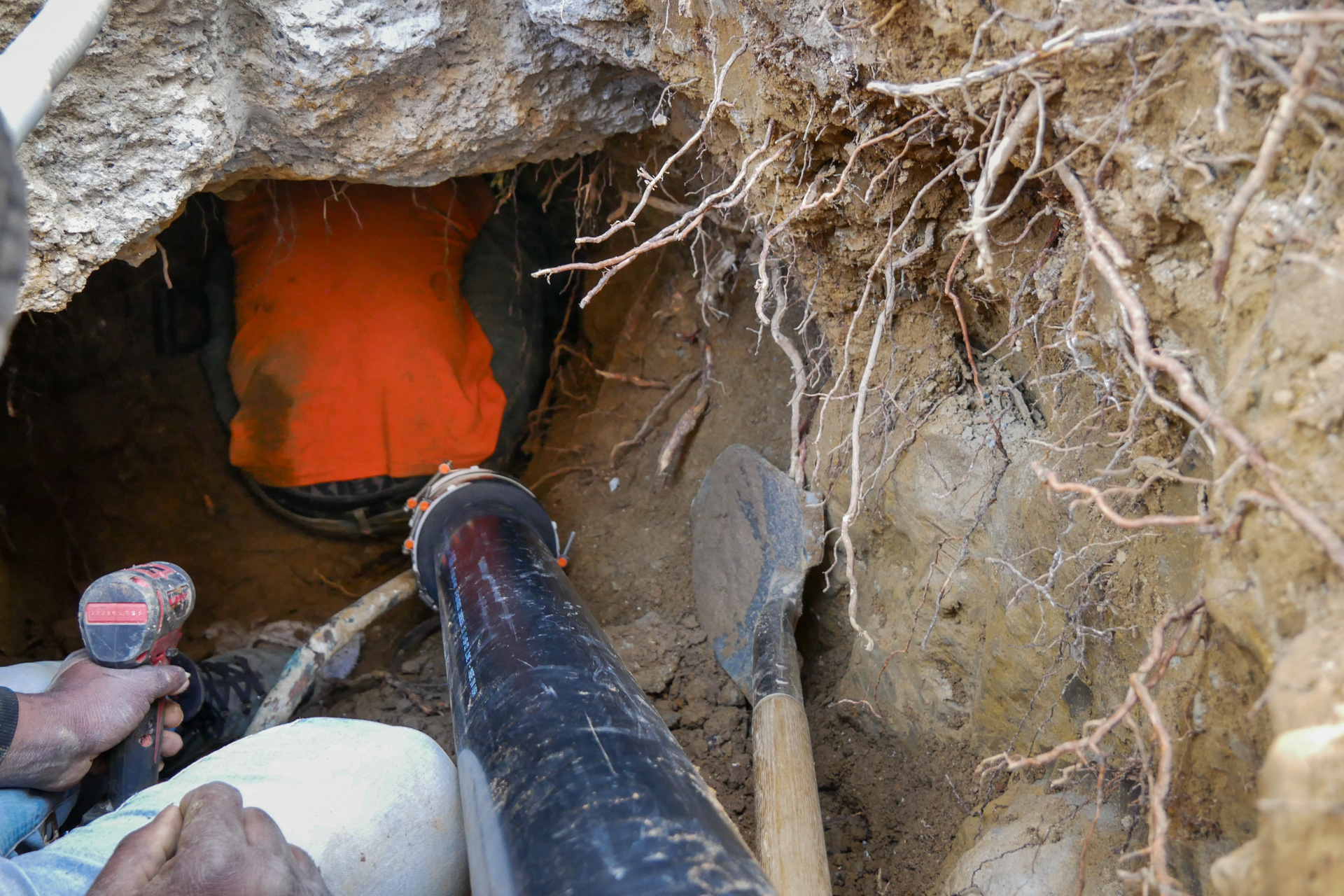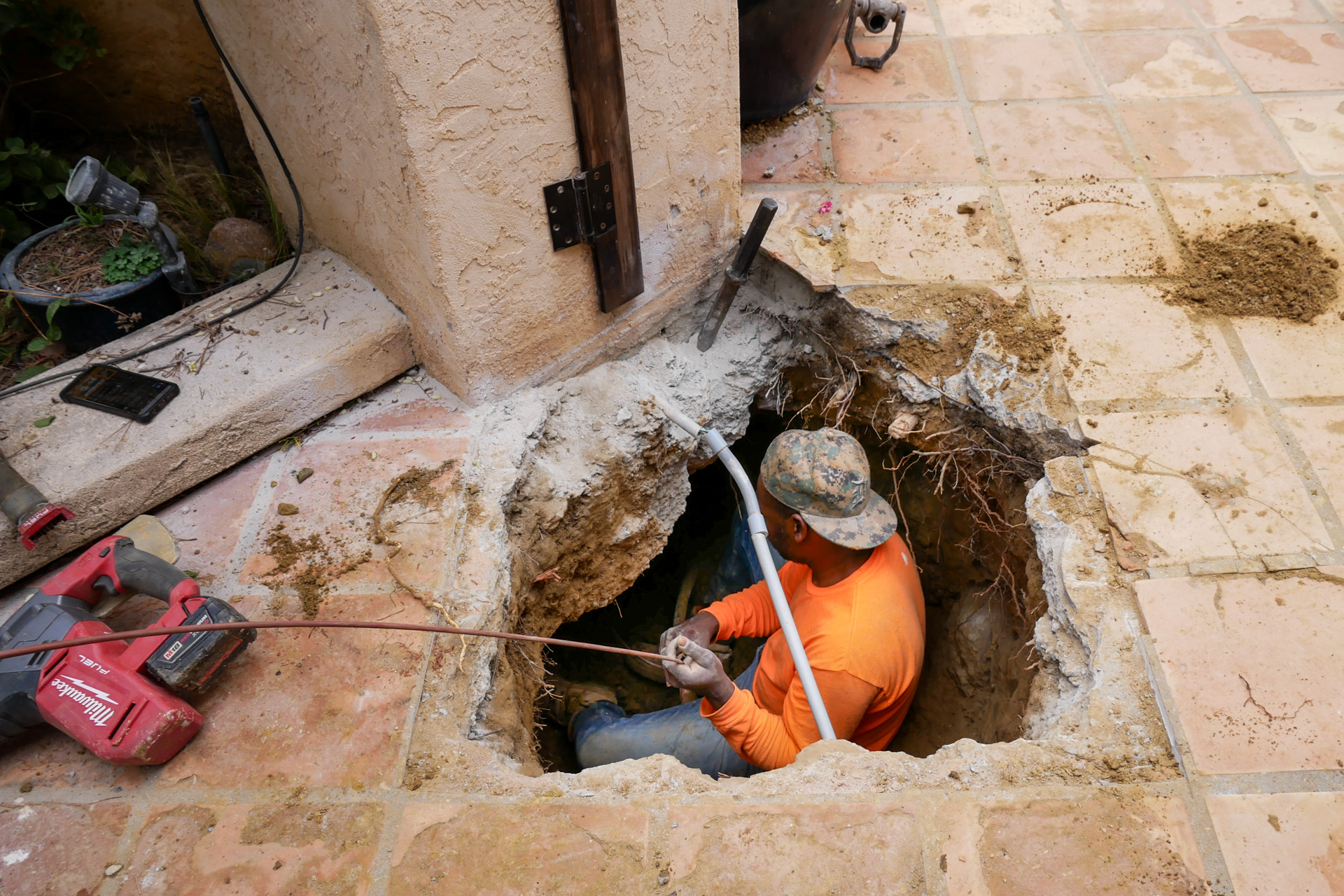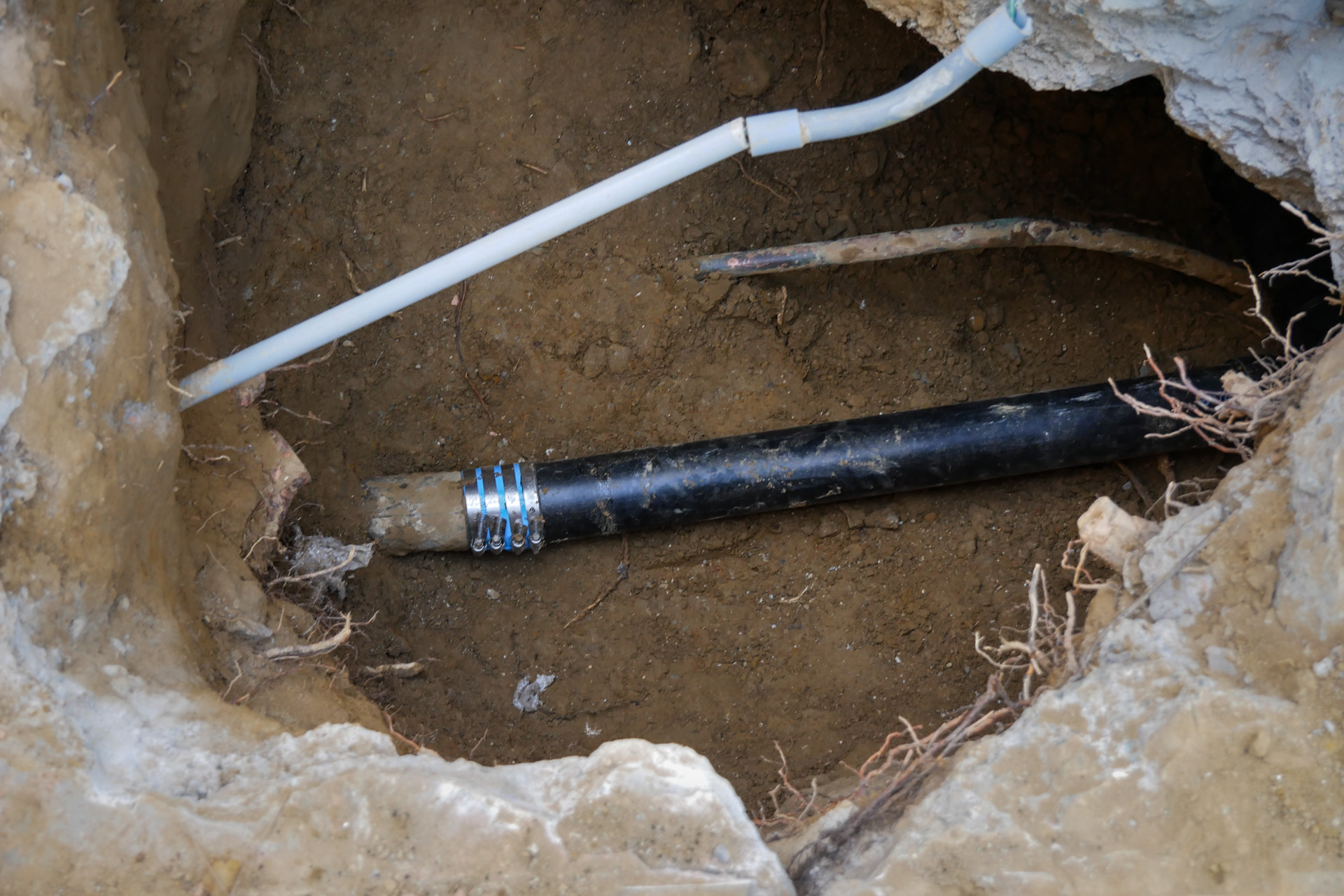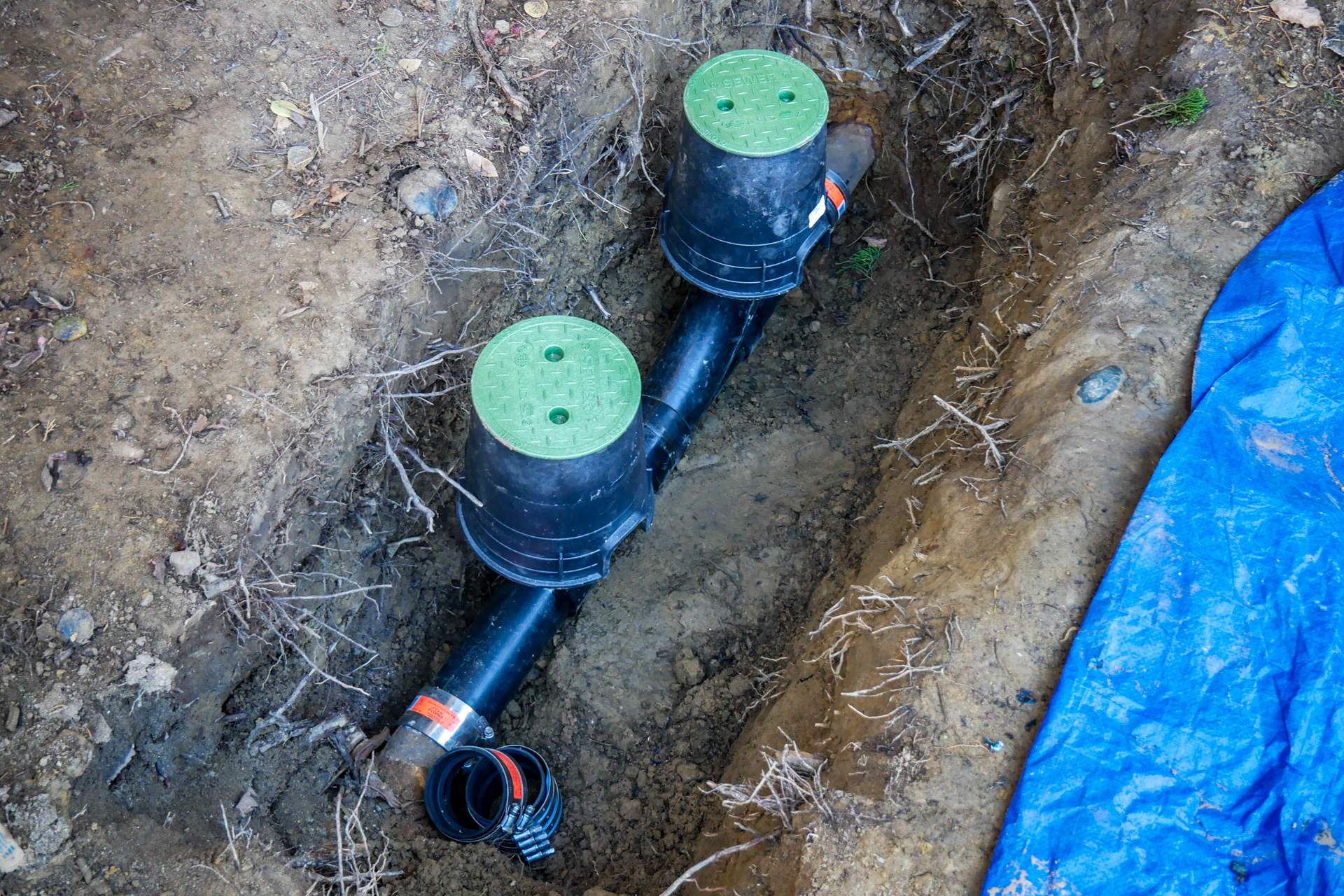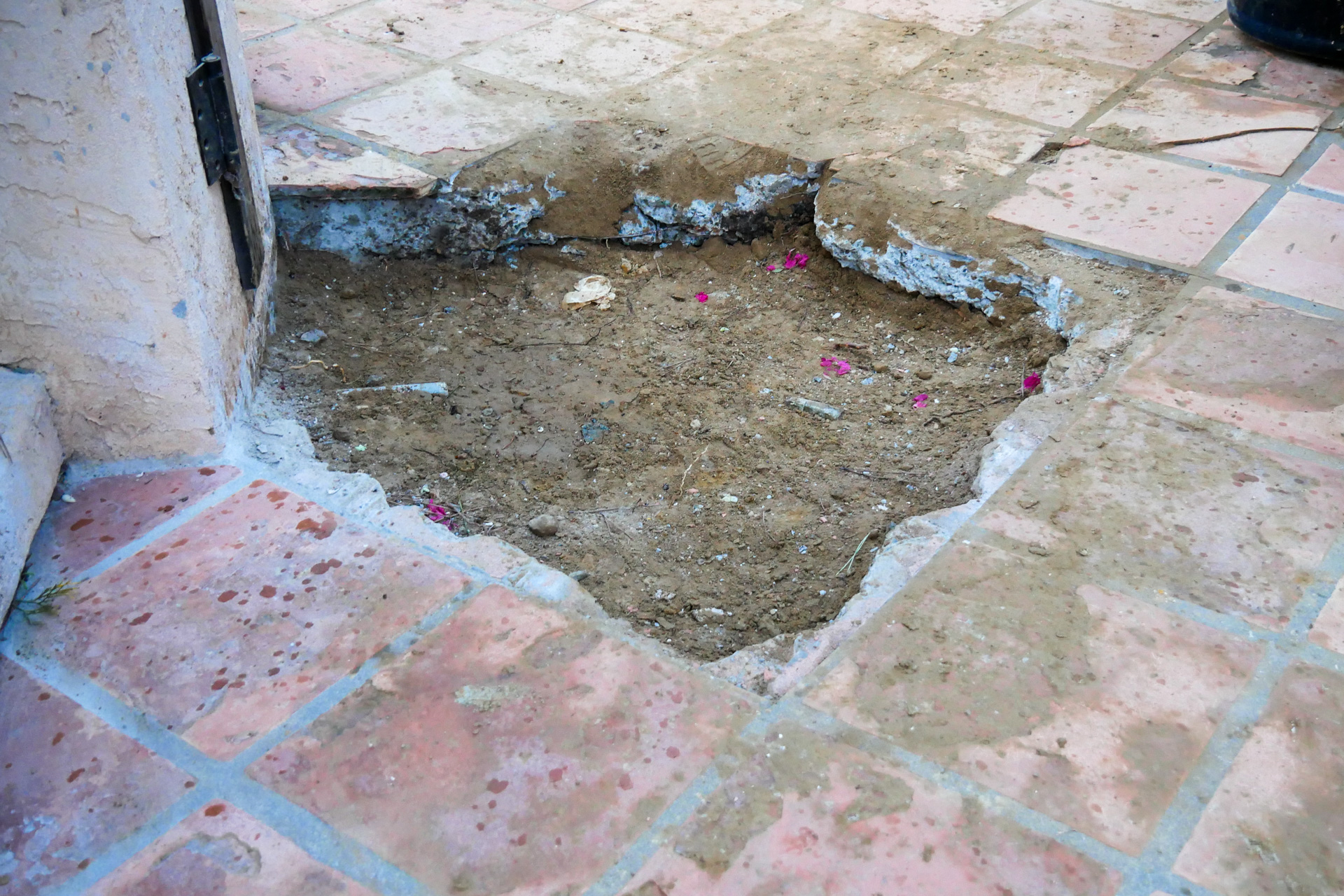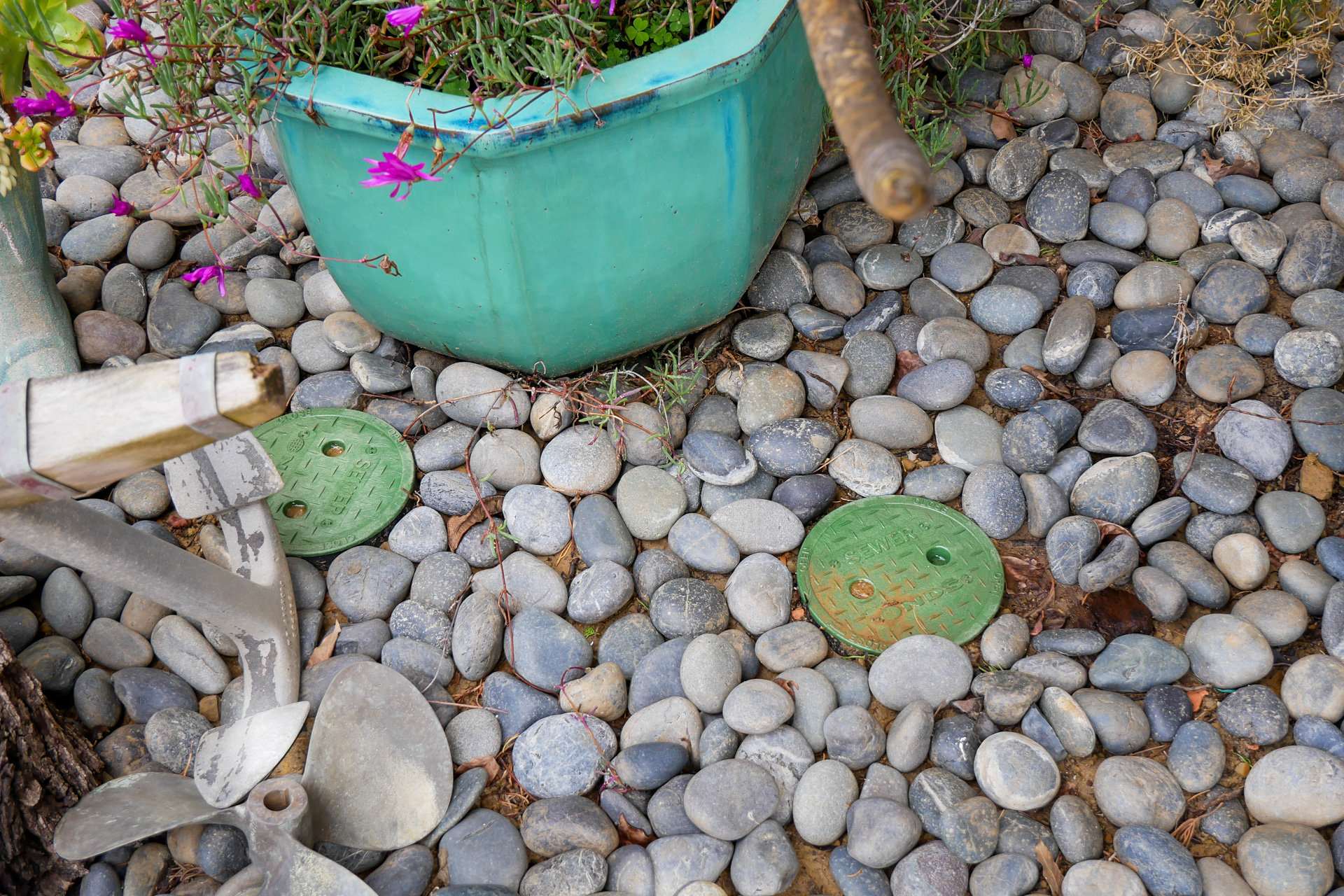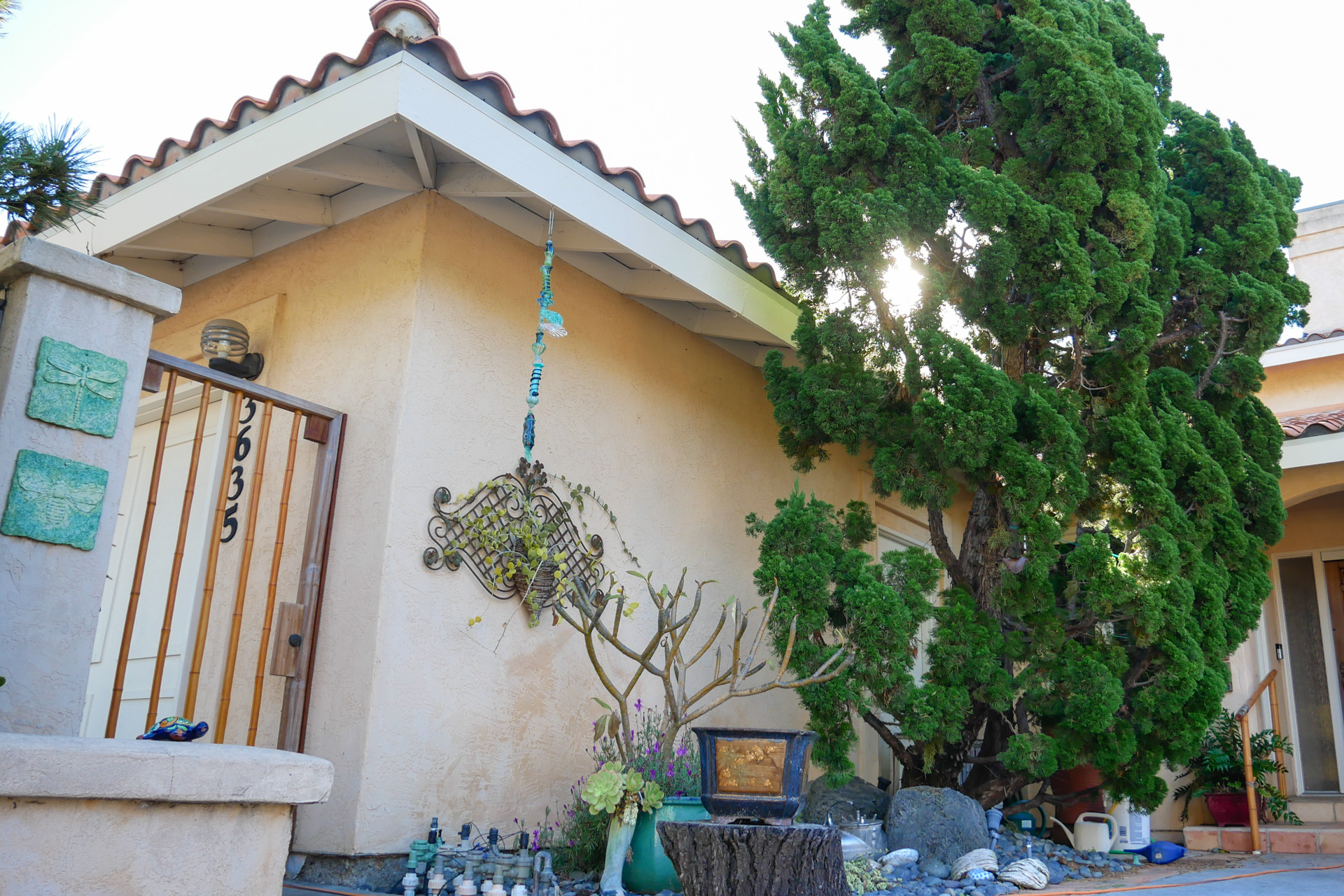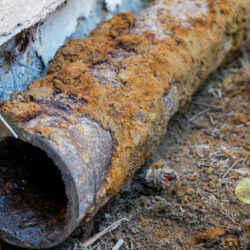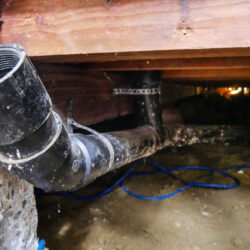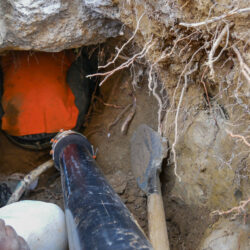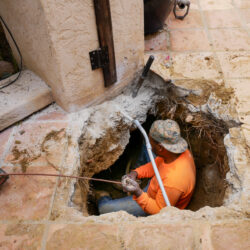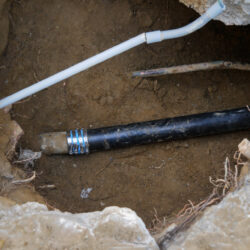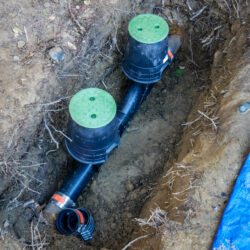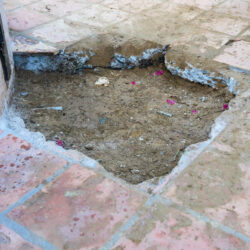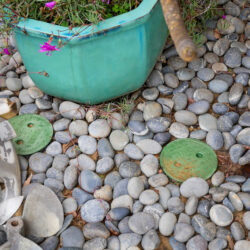How We Restored a Cast Iron Sewer System in One Day Using CIPP Inversion
Trenchless technologies are modern, practical solutions for repairing or replacing sewer systems in residential buildings without excavating the entire pipeline. Depending on the level of wear, Almco specialists typically recommend either epoxy lining of old pipes or their complete replacement. In this case study, CIPP (Cured-In-Place Pipe) Inversion lining was used to restore the functionality of a sewer system in a private home in Clairemont. The following text outlines the entire process, additional work performed, and the benefits of the proposed solution for the client.
Contents
Technologies & Services
Customer’s Problem & Proposed Solution
The customer faced:
- Worn-out sewer system with frequent clogs
- Damaged cast iron and clay pipes in the front yard and street
- Need for quality repairs within a limited budget
Worn pipes caused wastewater leaks and unpleasant odors, both inside the house and outside (in the yard), negatively affecting the residents’ well-being.
Almco proposed a trenchless repair using CIPP Inversion lining, a method that restores pipe functionality without replacement, reducing time and costs. The process involves creating a new epoxy resin lining inside the damaged pipe.
The complete scope of work included:
- Video diagnostics of the sewer system
- Restoration of cast iron sewer pipes using CIPP lining technology
- Replacement of damaged cast iron and clay pipes on the property
- Installation of service cleanouts in the yard
- Replacement of plumbing traps in the house and laundry room
- Replacement of a deformed section of cast iron pipe and connection to the municipal sewer system
Preliminary work involved digging a small trench in the yard to remove a section of worn cast iron pipe, providing access to the sewer system. Video equipment was used to diagnose the condition of the pipes, revealing multiple sewer branches and severely damaged cast iron pipes in the main sewer line (approximately 40 feet).
Inversion Lining Process Step-by-Step CIPP
The damaged sections of the main sewer line were restored using CIPP lining. Key steps included.
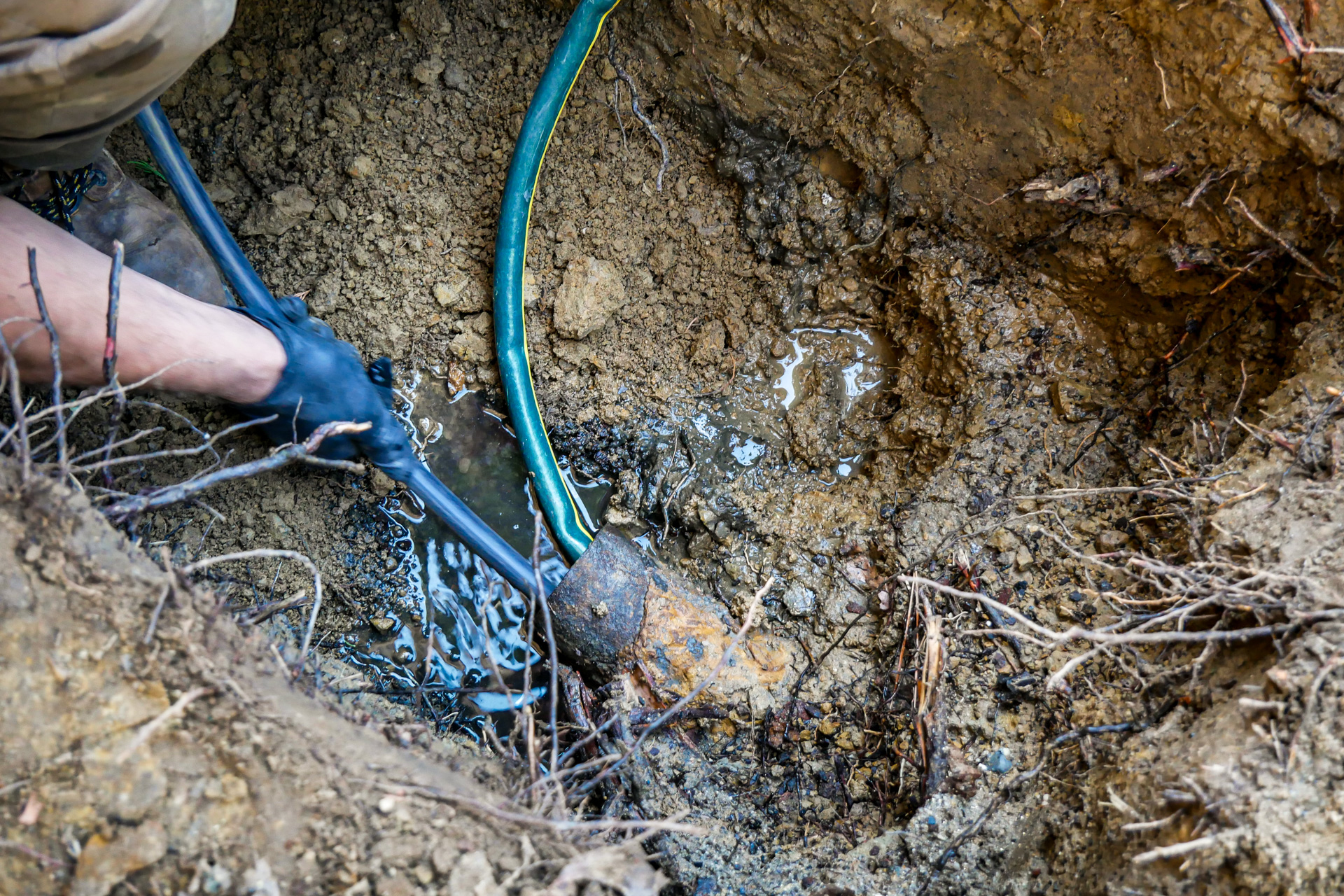
The quality of epoxy resin adhesion directly depends on the thorough preparation of the inner surface of the pipe being repaired. This stage consists of three main steps:
- Mechanical Cleaning: Almco Plumbing specialists use a flexible rotary shaft with a specialized attachment equipped with ultra-durable carbide chains to remove calcified deposits and other solid contaminants.
- Hydro-Jetting: A powerful compressor pump is used for cleaning. A washing head with calibrated diffusers delivers high-pressure water to flush out remaining debris from the pipes designated for restoration.
- Grinding: In the final preparation stage, the pipe is cleaned using a flexible rotary shaft with a rotating attachment. This process removes chips and burrs, ensuring perfectly smooth inner walls that won’t damage the liner during installation.
This combined treatment also guarantees excellent adhesion of the resin-impregnated liner to the inner surface of the restored pipeline.
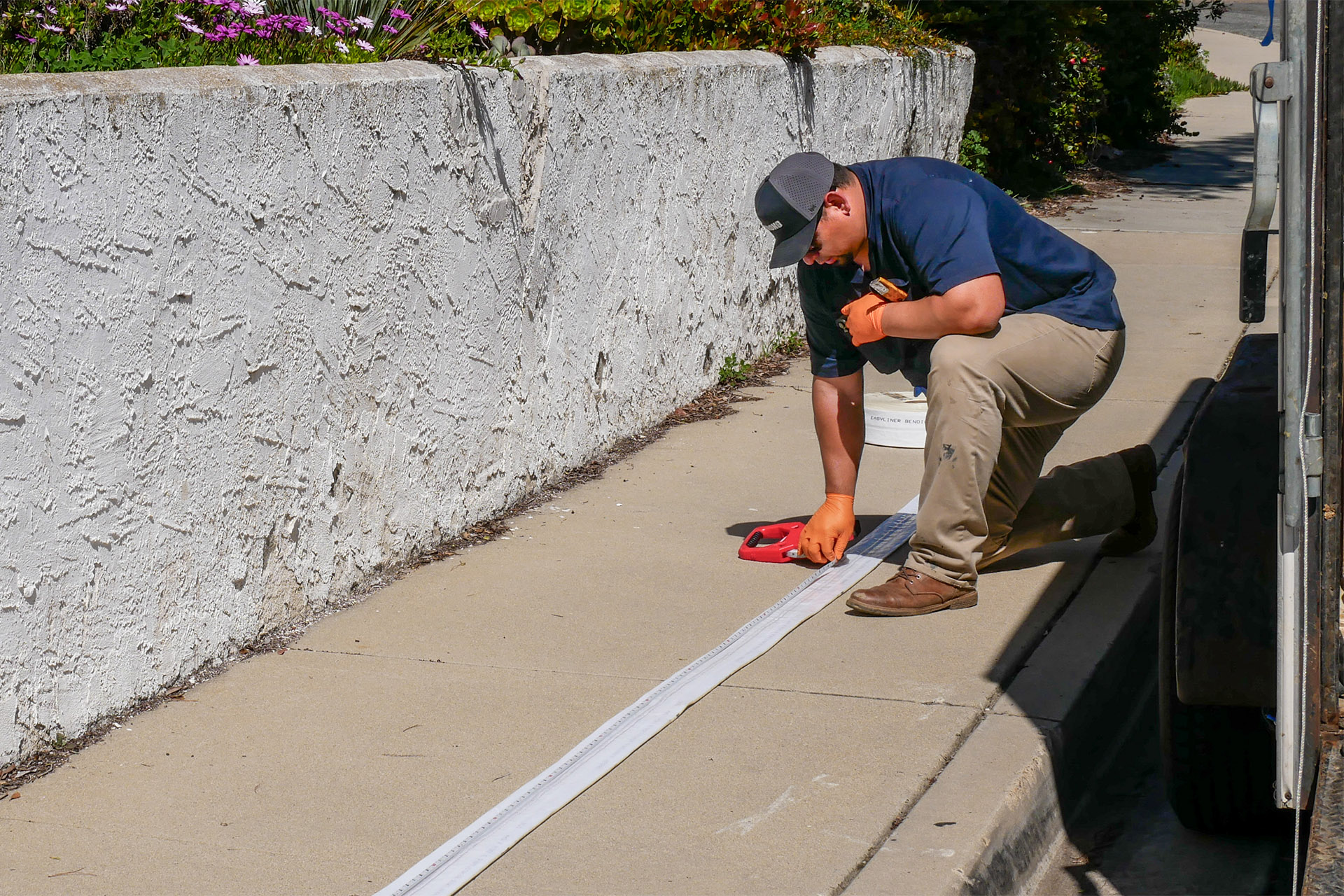
The size of the felt liner is selected based on the inner diameter of the pipeline being restored. This ensures no misalignments, folds, or compressions occur during installation, which could impede liquid flow after the resin hardens.
A sleeve of synthetic felt is prepared to match the length of the section being repaired, serving as the base for applying epoxy resin. The felt fibers hold the resin and act as a reinforcing material during curing.
Typically, a high-quality two-component epoxy resin with strong particle hardening is used. The required amount of resin is thoroughly mixed and poured into the prepared sleeve. The “wetting” process saturates the liner with resin, making it ready for installation.
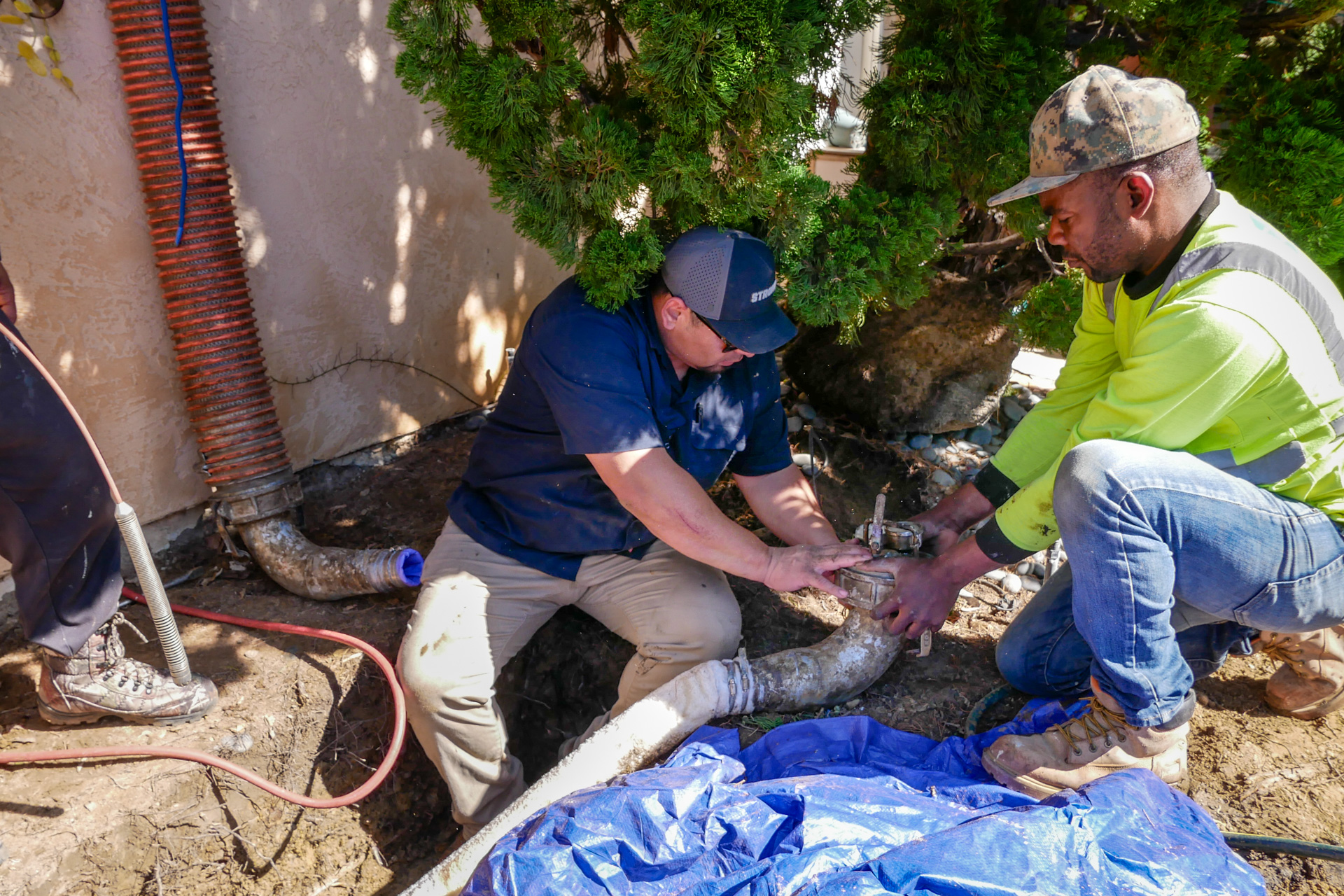
The epoxy resin-impregnated liner is placed into an installation unit and connected to the entrance of the pipeline being repaired using a technological cuff.
Inside the prepared pipeline, the liner is inverted “inside out” under high air pressure, applied via a specialized technological nozzle. This ensures the epoxy resin on the felt base adheres tightly to the inner surface of the pipe. The epoxy penetrates microcracks and fills irregularities, securely forming a perfectly sealed pipe within the existing structure.
A plastic sheet is placed inside the liner to facilitate the removal of the air bladder after the resin cures. The liner is then inflated using an air bladder filled with compressed air. The resin-soaked felt fibers adhere to the previously prepared pipe surface, and the entire assembly is left in place until the epoxy fully cures.
The resin curing process takes 3 hours. Once complete, the air bladder is removed, leaving a high-strength epoxy coating.
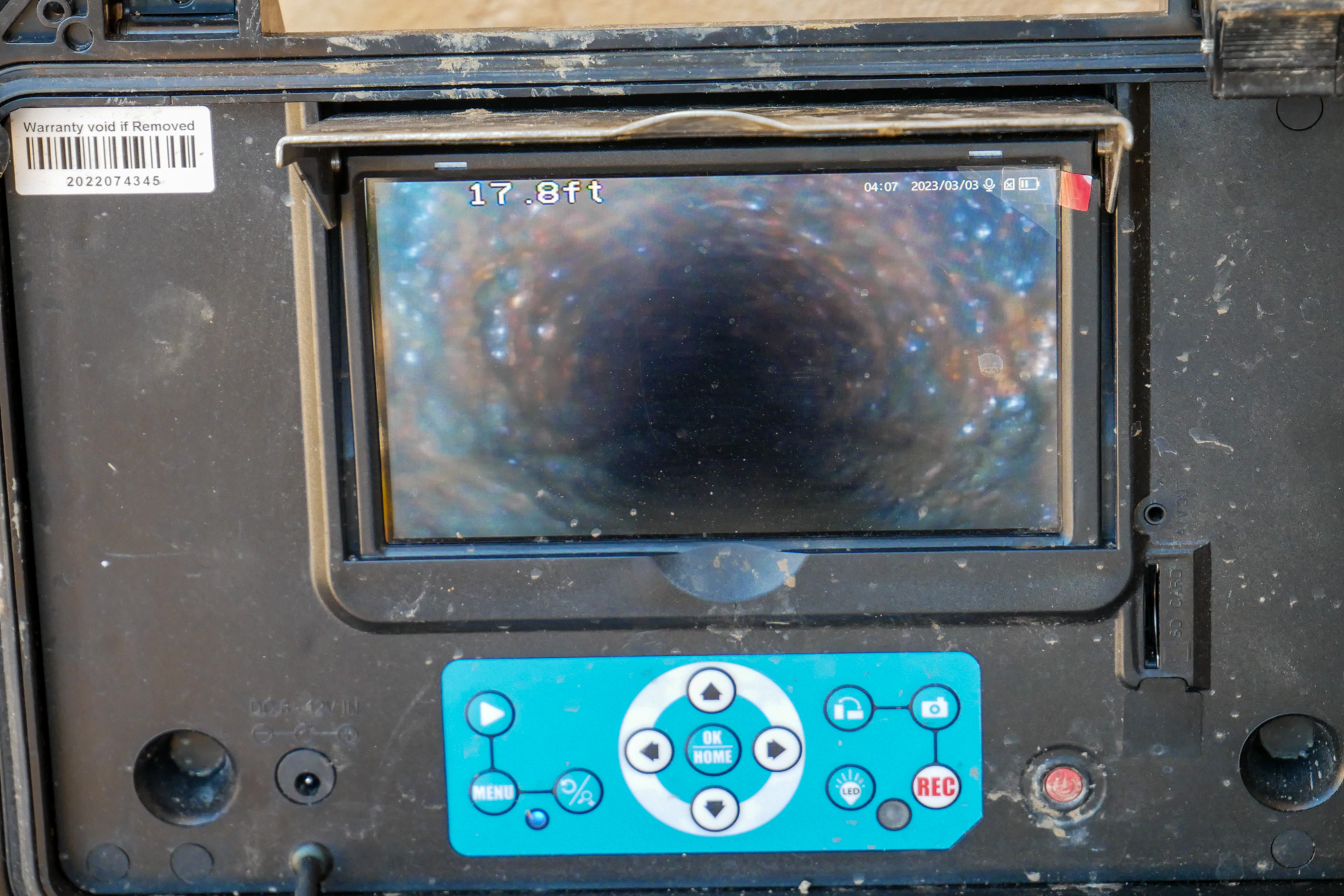
The final stage involves inspecting the quality of the work using a video camera on a flexible cable.
This equipment allows examination of the cured liner to confirm its proper adhesion to the inner surfaces of the repaired pipe.
Additional Work Performed Within the Project
In addition to restoring part of the sewer system using CIPP lining, cast iron pipes in the house’s crawlspace were replaced with high-strength PVC pipes. All connections were treated with polyester sealant and secured with couplings to ensure the longevity of the sewer system components.
Service cleanouts were installed near the house to facilitate future maintenance of the sewer system. Additionally, plumbing branches and traps in the house and the laundry room (located in the garage) were replaced.
During a camera inspection, a sagging and deformed cast iron pipe was identified, requiring replacement. As the liner could not navigate this damaged section, a portion of the sidewalk’s pavers was removed, a trench was dug, and the damaged pipe segment was manually replaced with an ABS pipe. Furthermore, the old cast iron pipe connecting the home’s sewer to the municipal system was replaced with new PVC pipes, using a transitional cuff for connection.
Upon completion, the lawn was restored to its original condition, and the sidewalk pavers were reinstalled. The sewer system was re-inspected using video cameras to verify the liner’s proper adhesion to the inner pipe walls.
Advantages of CIPP Inversion & Materials Used
Materials used in CIPP lining technology include polyester, vinyl ester, and epoxy resins, each with distinct characteristics:
- Polyester Resins: Cost-effective, with good strength, suitable for standard conditions.
- Vinyl Ester Resins: Highly resistant to chemicals, ideal for aggressive environments.
- Epoxy Resins: Offer superior strength and excellent adhesion to various surfaces, making them the preferred choice for most projects.
The application of CIPP Inversion lining, combined with traditional pipe replacement, accelerated the repair of the private home’s sewer system, ensuring long-term durability during operation.
